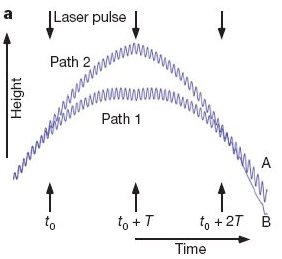
DARK matter may be prompting black holes to appear spontaneously in the hearts of distant exotic stars. If so, this could hint at the nature of dark matter.
Arnaud de Lavallaz and Malcolm Fairbairn of King's College London wondered what would happen when dark matter - which makes up most of the mass of galaxies - is sucked into the heart of neutron stars. These stars, the remnants of supernova explosions, are the densest known stars in the universe. It turns out that the outcome depends on the nature of dark matter.
Most of the favoured theories of dark matter suggest each particle of the stuff is also an antiparticle, meaning that they should annihilate each other when they meet. But Fairbairn and de Lavallaz considered a dark matter particle of a different type, which is not also its antiparticle.
The pair calculated what would happen if dark matter particles like these were attracted by the intense gravity of neutron stars. Because they would not annihilate each other, the dark matter particles would end up forming a smaller, dense star at the heart of the neutron star. If the neutron star were near the centre of the galaxy, for example, and surrounded by an abundance of dark matter, then it would continue to accrete dark matter.
Eventually, the mass of the dark matter star would exceed its "Chandrasekhar limit" - beyond which a star cannot withstand gravitational pressure. The dark matter star would collapse into a black hole. "Then the neutron star won't be able to survive anymore, and it'll collapse too," says Fairbairn. "It would be pretty catastrophic."
Their calculations show that if a neutron star collapsed in this way the result would be a burst of gamma rays, which could be spotted from Earth (arxiv.org/abs/1004.0629).
Various underground experiments back on Earth have been trying to detect dark matter, using different techniques. While none of the major experiments have seen anything yet, physicists running the Dark Matter (DAMA) experiment inside the Gran Sasso mountain in Italy have been saying for some time that dark matter particles are hitting their detector. Most physicists are sceptical of the DAMA results because it doesn't sit well with favoured theories on the nature of dark matter.
Fairbairn says that the DAMA experiment could be sensitive to dark matter particles that do not self-annihilate, which might explain why it is seeing something and others are not.
Dan Hooper of Fermilab in Batavia, Illinois, agrees the pair's scenario is plausible because the existence of dark matter particles that do not self-annihilate cannot be ruled out. "We could look for evidence that neutron stars don't live very long in regions with a lot of dark matter," he says. "I find exciting the prospect of using exotic stars as dark matter detectors."
http://www.newscientist.com/article/mg20627564.900-dark-matter-may-give-neutron-stars-black-hearts.html?DCMP=OTC-rss&nsref=physics-math









